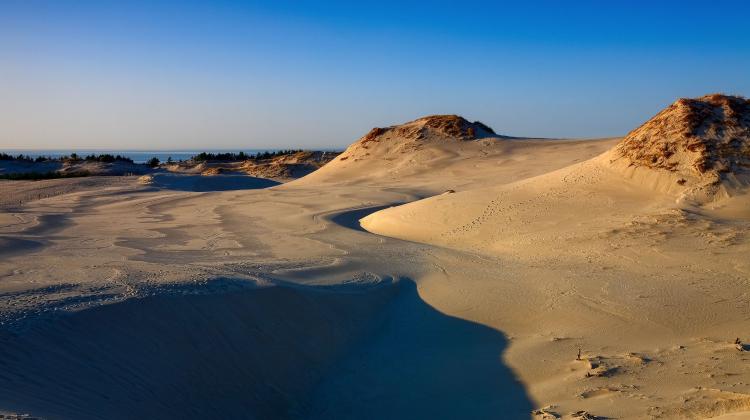Dance of the dunes...
Not every dune in a dune field moves at the same speed. It turns out that dunes can regulate each other's speed. What's more, they can share the sand 'fairly’.
Dr. Karol Bacik received the prestigious APS award for describing the surprising properties of dune movement in an experiment with a rotating cylindrical aquarium.
The study recognized by the American Physical Society in the field of fluid dynamics was published in Physical Review Letters (HERE and HERE) and Physical Review Fluids (HERE).
Dr. Bacik, now at the Massachusetts Institute of Technology, conducted research on sand dunes as part of his doctoral project at the University of Cambridge.
WHERE THERE IS SAND, THERE ARE DUNES
Dunes - sandy hills - are formed not only by wind in deserts or coasts, but also by the movement of water - at the bottom of rivers, bays or oceans. Dunes can also be found on the surfaces of other celestial bodies - Mars, Venus and Titan (Saturn's moon). There are tiny dunes - ripples in the sand on the beach - but also large, several dozen meters high dunes in deserts or the bottom of bays.
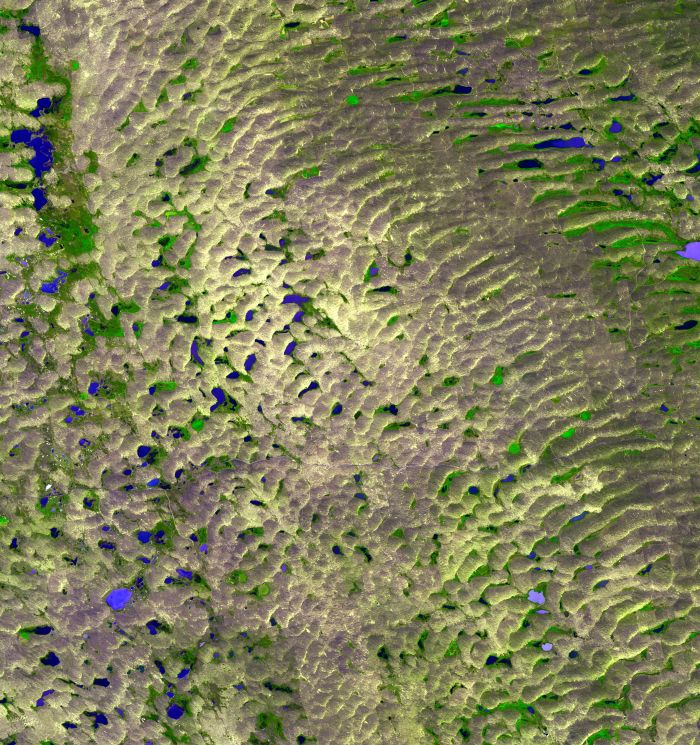
MOVING SANDS
Some dunes are trapped in their location, e.g. those covered with vegetation - a common case on the Polish coast. There are also dunes that are moved by water or wind, but alternately in opposite directions, so there is no clear tendency in their movement (this is how ripples form on the sea shore). However, there are also crescent-shaped barchan dunes that move. They appear in the desert, at the bottom of the seas or inlets.
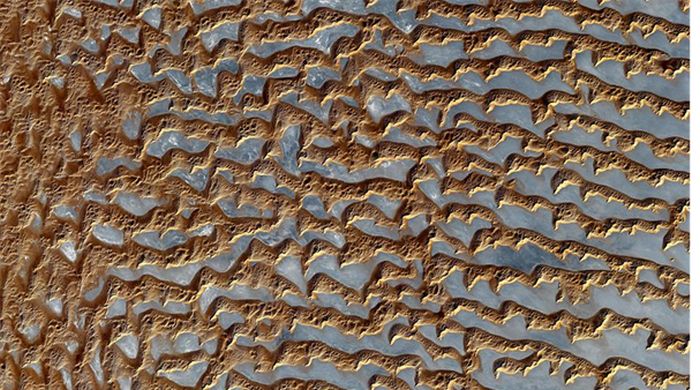
RULES OF SAND MOVEMENT
Dr. Bacik mentions tells PAP - Science in Poland that certain rules describing the movement of a single dune are already well known. For example, if a dune is shaped like a crescent, the corners of the crescent point in the direction in which the wind blows. It is also known that smaller dunes move faster than larger ones. And the speed of the dune depends on the wind speed. Another known fact is that in a dune, only the sand on the surface moves. But as each piece of the dune comes to this surface over time, the entire dune is generally moved as a result.
However, it has not been fully known what happens when there are more dunes, i.e. what the movement of many dunes looks like. And dunes are not solitary creatures at all. In fact, they can form entire dune fields. The interactions that may occur between dunes have not yet been thoroughly explored.
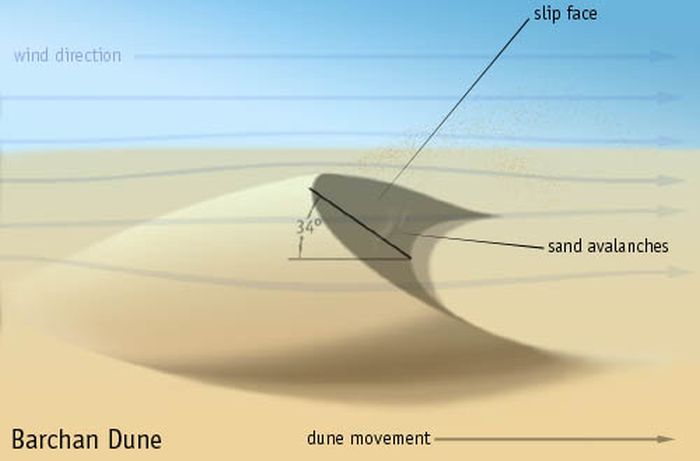
SAND IN ANY STATE
Modelling the movement of sand is a mathematically non-trivial issue because - depending on the conditions - sand may behave as if it were in various states of matter. It can be like a solid - that's why you can build castles from it; like a liquid - that's why dry sand takes the shape of the container into which it is poured; and also like gas - sand clouds from the Sahara can even reach Europe.
Modelling the behaviour of sand - sometimes resembling a solid, sometimes a liquid, sometimes a cloud of dust - can be a mathematically complex problem. This can be seen, for example, in the Sandman's birth scene in Spider-Man 3, where the animators had to face quite a challenge to prepare a credible-looking scene of the character's birth from sand.
THE WIND RIDES DOWN FROM THE DUNES
It may seem that each dune is pushed in the same way, so they should all slide along the ground at the same pace. And this is where aerodynamics plays a trick.
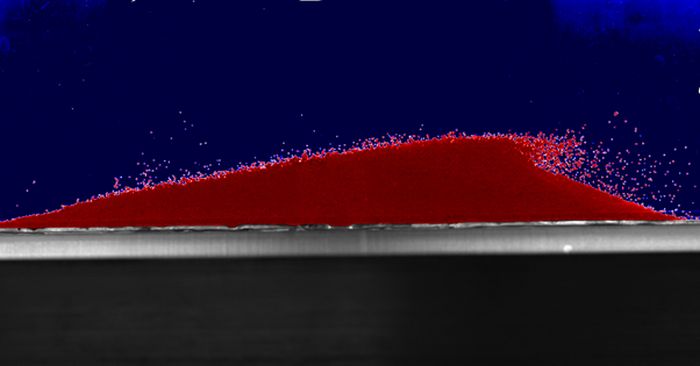
DUNE 2
The question is how the wind or water behaves once it has passed the dune. It turns out that going down a sand hill disturbs the water/air movement so much that turbulence appears on the next dune - 'while the sand flows calmly on the first dune, it almost +boils+ on the next one,’ says Bacik. This causes the wind to move the sand faster on this next dune. As a result, over time, the sand hills move away from each other.
You could say that the fleeing dune has the wind in its wings, and the one chasing it has the sand in its eyes.
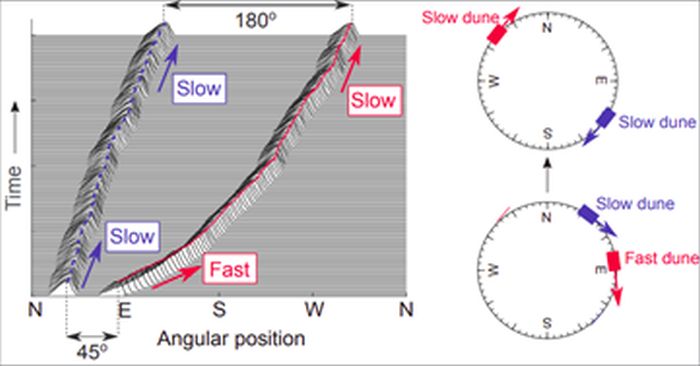
A graph showing how fast two dunes are moving in the experiment. The 'red' dune runs away from the 'blue' dune until they are on opposite sides of the cylinder. Credit: Karol Bacik, Nathalie Vriend
DUNE DEAL
The first dune that wind/water hits will move at the same pace regardless of whether there are other dunes behind it. However, the next dunes (those on the leeward side) accelerate until they move to a 'safe' distance from the dune behind them. 'The dunes pushing away from each other can - to put it simply - be compared to drivers trying to keep safe distances in a column of cars,’ says Bacik.
The scientist not only designed and conducted experiments on multiple dunes moving in one direction and how the dunes overcome obstacles, but also prepared a mathematical description of this movement.
WALTZING DUNES
The experiment itself was designed in an interesting way. Researchers from Professor Nathalie Vriend's team at Cambridge developed a machine for producing dunes. They built a large, cylindrical aquarium, but the water was only in a thin ring around its circumference. The water was accelerated to flow at a constant speed around the cylinder. Two hills of glass balls were placed at the bottom of the tank - modelling sand - and the researchers observed how their shape and position would change over time.
The video material shows the dune machine built for the experiment. Credit: Karol Bacik, Nathalie Vriend
In this clever way, the researchers could continuously observe the interaction of two dunes of the same size. It turned out that if the dunes were placed at a certain distance from each other, over time they would move away from each other until each of them was at the opposite side of the cylinder.
The researcher also observed what happened in the dune machine when two dunes were of different sizes. Smaller dunes generally move faster than larger ones. So the question is whether it is possible to make one dune catch up with the other. It turns out that if a smaller dune chases a larger one, the larger one, in order to 'escape' the smaller dune, loses sand, which then becomes part of the 'chasing' dune - but only until the sizes of both dunes become equal.
THE DUNE OVERCOMES AN OBSTACLE
During their movement, sand dunes sometimes encroach on areas or objects important to humans. They cross roads, cover pipelines and reach cities. It would be good to have a description of the movement of these sand objects and predict how they will interact with the environment.
Dr. Karol Bacik also described how dunes overcome obstacles they encounter in their path. It was not obvious.
Dunes encounter numerous obstacles on their way, for example pipelines. A mathematical description of the dune's interaction with various obstacles was provided by Karol Bacik. The video shows a dune machine experiment demonstrating how an underwater dune affects a round obstacle.
PAP - Science in Poland, Ludwika Tomala
lt/ zan/ kap/
tr. RL
Przed dodaniem komentarza prosimy o zapoznanie z Regulaminem forum serwisu Nauka w Polsce.






